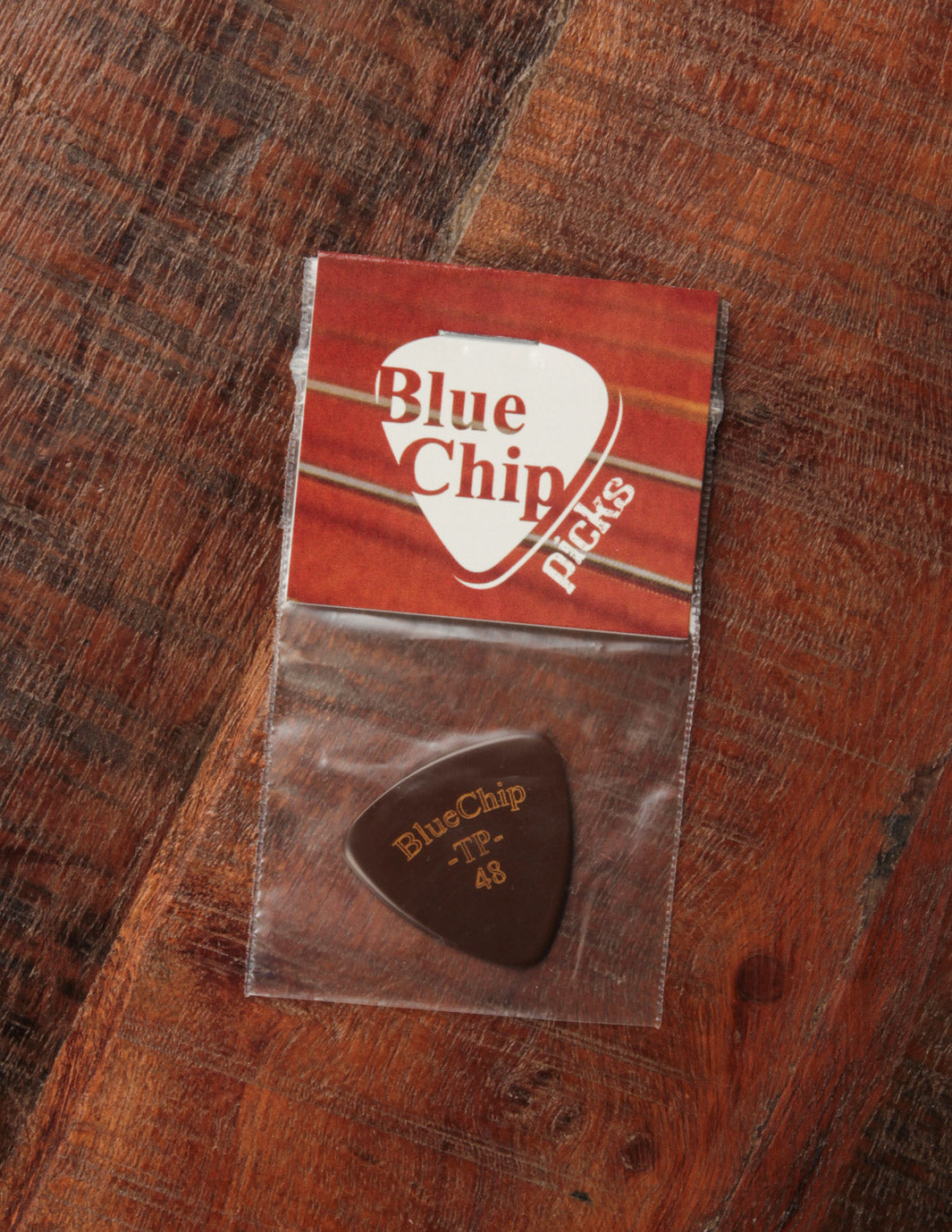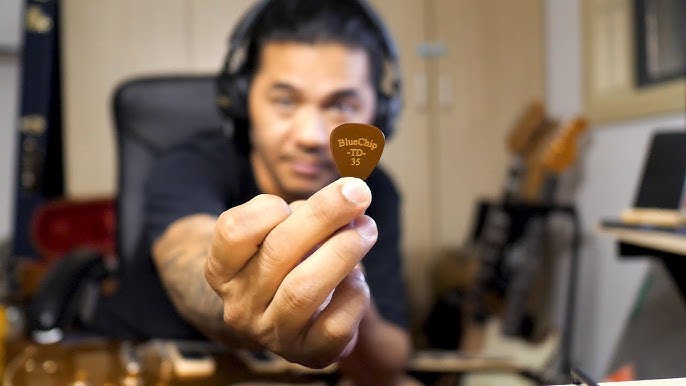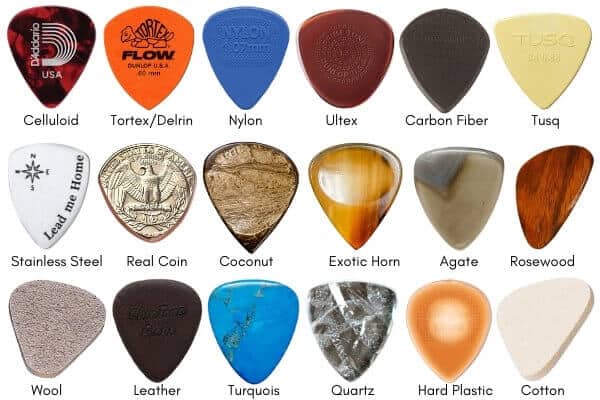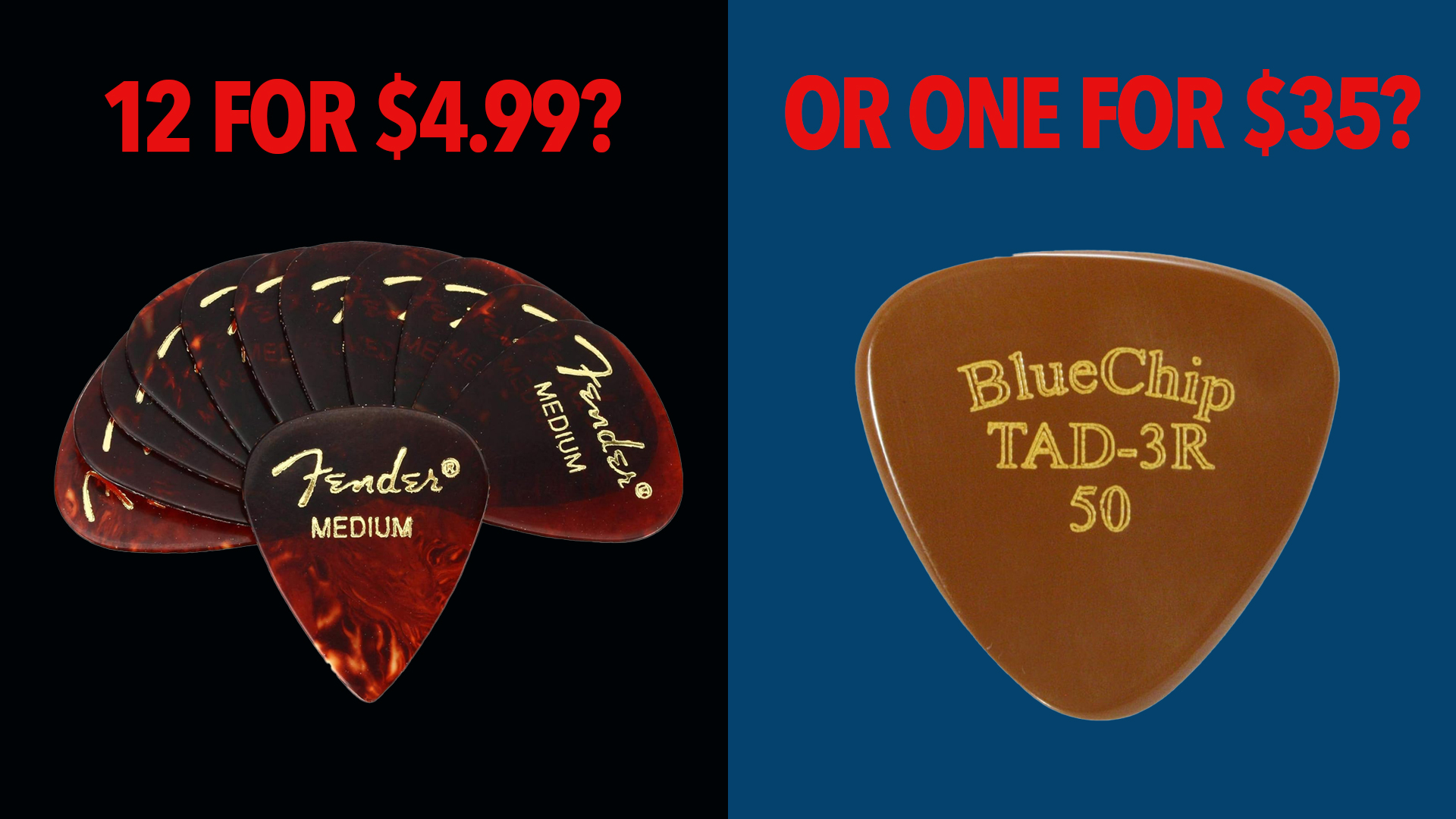After spending months testing Blue Chip picks and diving deep into the guitar community’s heated debates, I’m here to share what really matters when choosing a pick. You’ve probably seen the buzz around these premium picks, with some players swearing by their tone and others dismissing them as overpriced hype. The truth lies somewhere in between. Guitarists often face confusing marketing claims about premium picks like Blue Chip, with many wondering if the high price actually translates to better tone or playability. This hands-on review combines personal experience and real player insights to give you an honest look at Blue Chip picks, helping you decide if they’re worth your investment and how to choose the right pick for your unique playing style.
Understanding Blue Chip Picks: What Are They and Why the Controversy?
Blue Chip picks are handcrafted, premium guitar picks known for their unique materials and distinctive designs. They come with a hefty price tag, often around $35 per pick, which naturally raises eyebrows among guitarists who are used to paying just a few dollars for standard picks. This premium pricing has sparked a mix of curiosity and skepticism in the guitar community. Many players question whether the cost reflects genuine improvements in tone and playability or if it’s simply marketing at work.

Some common misconceptions about Blue Chip picks include the assumption that all premium picks will drastically improve your tone or that the material alone guarantees better sound. There’s also a concern about marketing hype inflating the perceived value, with some users noting a sudden surge in posts promoting Blue Chip picks that feel more like advertising than genuine reviews.
Real guitarist experiences reveal that while these picks are crafted with care and use quality materials, the value you get depends heavily on your personal preferences and playing style. For example, some users express disbelief over the $35 price tag for what is essentially a small piece of plastic or acrylic. This price point challenges the traditional understanding of guitar accessories and pushes players to critically evaluate what they’re truly paying for. For those interested in exploring the craftsmanship and philosophy behind these premium picks in greater detail, BlueChip Picks | The perfect connection to your instrument offers an insightful look into what sets them apart.
- Research pick materials and construction before buying to understand what makes a pick unique.
- Be wary of marketing hype; seek out genuine user reviews and hands-on experiences.
- Consider what aspects of tone and playability matter most to you before investing in premium picks.
Video tutorial: Exploring the Blue Chip Pick and its unique sound
Hands-On Experience: How Blue Chip Picks Feel and Sound
Testing Blue Chip picks over several weeks across electric and acoustic guitars revealed nuanced differences in feel and tone. Compared to common picks like the Dunlop Jazz III and Wegen TF-150, Blue Chip picks offer a unique tactile experience. Their smooth yet firm grip and carefully balanced thickness make them comfortable for extended playing sessions, especially for intricate picking styles.

One notable observation came from trying the Blue Chip TAD-50 model, which felt particularly adept for fast melody lines and mandolin doubled strings. The pick’s rigidity and shape allowed precise attack without sacrificing control. However, not every player noticed significant differences; some found Blue Chip picks to be “just another pick,” emphasizing that personal preference plays a huge role in perceived improvements.
Playability gains are often subtle but meaningful for players who demand consistency and comfort, especially on instruments like the mandolin or octave mandolin where string response and articulation are critical. If you’re primarily a rhythm player or use a heavier pick, the differences may be less pronounced.
- Try different pick thicknesses gradually to find the one that feels best for your technique.
- Test picks on your primary instrument to assess their real impact on tone and playability.
- Record yourself playing with various picks to objectively compare tone differences over time.
“Its funny what the brain can do to justify the cost of something.”
For those curious about other players’ real-world experiences and varying perspectives on Blue Chip picks, these testimonials from BlueChip Picks users offer an insightful range of feedback that might help you decide if they’re right for your style.
Exploring the sound and feel of premium Blue Chip guitar picks.
The Psychology of Gear and Marginal Gains: Why We Chase Premium Picks
Many guitarists invest in high-priced gear like Blue Chip picks hoping to unlock subtle improvements in tone and playability. This pursuit of marginal gains often blends objective evaluation with psychological factors. The placebo effect can lead players to perceive a pick as better simply because they paid more, even if the actual tone difference is minimal.

The brain’s tendency to justify expenses sometimes results in initial skepticism turning into appreciation after repeated use, or vice versa. For example, a player might dismiss a premium pick at first but later find it comfortable and enjoyable after giving it a fair chance. Conversely, some players remain unconvinced, concluding that skill and setup matter far more than the pick itself.
High-profile guitarists like John Mayer demonstrate that tone depends heavily on skill, instrument setup, and playing technique rather than just gear. His complex rig is secondary to his mastery of the instrument, highlighting that premium picks are tools—not magic solutions.
Understanding this balance between gear obsession and genuine improvement is crucial. For those interested in exploring the psychological and behavioral aspects behind the urge to constantly upgrade gear, this detailed study on Gear Acquisition Syndrome provides valuable insight into how musicians’ relationships with their equipment evolve over time.
- Focus on developing your skills and optimizing your rig before investing heavily in premium picks.
- Use premium picks as tools to complement your playing, not as guaranteed tone upgrades.
- Maintain a critical mindset and test gear thoroughly before making purchases.
“Forget about picks for sound… Use the picks that feel the most comfortable, and that’s it.”
Managing Gear Acquisition Syndrome: Psychological Insights and Strategies
Choosing the Right Pick for You: Practical Advice and Alternatives
Selecting the right guitar pick involves considering several factors including thickness, material, shape, and your playing style. Thickness affects attack and flexibility; thinner picks tend to produce brighter tones and are often preferred for strumming, while thicker picks offer more control and volume for lead playing.

Material choices range from standard plastics to premium acrylics and exotic composites, each influencing grip and tone subtly. Shape and size also impact comfort and precision—pointed picks allow for sharp attack, while rounded picks offer smoother strumming.
Premium picks like Blue Chip may be worth the investment if you have a niche playing style or seek specific tonal qualities and durability. However, affordable alternatives such as Dunlop Jazz III picks provide excellent value and are widely used by professionals and beginners alike.
Real guitarist experiences emphasize prioritizing comfort over tone claims. Many players successfully use everyday picks or even improvised tools, proving that feel is paramount.
- Experiment with different picks within your budget to find what feels and sounds best.
- Listen critically to tone differences but prioritize how the pick feels in your hand.
- Consider your instrument type—electric or acoustic—and adjust your pick choice accordingly.
Practical exercises like testing three picks of varying thickness and material over a week can help you note playability and tone differences. Recording yourself with your current pick versus a Blue Chip pick provides objective insight into any tonal changes.
Also, avoid common mistakes such as buying expensive picks without testing or falling for marketing hype without critical evaluation. For those looking to deepen their understanding and make a confident choice, the Guitar Pick Buying Guide offers an excellent, detailed overview of pick characteristics and tips from seasoned professionals.
Video tutorial: How to choose the right guitar pick
Debunking Myths and Addressing Common Questions About Blue Chip Picks
There’s a lot of confusion around what Blue Chip picks are and what they promise. They are handcrafted using quality acrylic materials designed for durability and a smooth playing experience, but they are not magical tone changers. Common questions include “What is a Blue Chip pick?” and whether the premium price is justified.

Many players call out marketing tactics that inflate expectations, cautioning against blindly trusting promotional content. It’s important to separate marketing claims from actual player experiences to make informed decisions.
Verifying information from multiple sources and engaging with authentic user feedback can clarify misconceptions. Real guitarist stories reveal that while Blue Chip picks offer unique qualities, they are not universally superior to all other picks. The choice ultimately depends on individual preferences and playing context. For most guitarists, the idea of spending this kind of money on a pick may feel unusual, but understanding the craftsmanship and stories behind Blue Chip can provide valuable perspective.
- Verify information from multiple reliable sources before making a purchase.
- Engage with real player feedback and reviews to inform your choices.
- Maintain healthy skepticism about marketing claims and focus on personal testing.
“What is a Blue Chip pick?” is a question many ask before deciding if it’s right for them.
Conclusion
Blue Chip picks can offer unique playability benefits, particularly for players seeking specific feel and precision. However, they are not a guaranteed tone upgrade for everyone, and their premium price requires critical evaluation. Personal testing and honest assessment should guide your investment in any guitar pick.
Ultimately, focusing on skill development and optimizing your gear setup will have a far greater impact on your tone than any pick alone. Use picks as tools that support your playing style, not as shortcuts to better sound.
Ready to apply these techniques? Try different picks yourself, share your experiences in the comments, and don’t fall for hype without testing.
What’s your experience with premium guitar picks like Blue Chip? Have you noticed real differences or felt it was just marketing? Let’s discuss below!
Excellent, common sense article.Whenever I start craving exotic gear …
I practice.